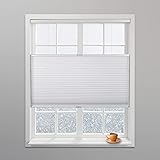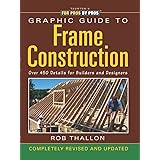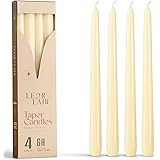Have you ever walked into a room and felt like something was just…off, but you couldn’t quite put your finger on it? Or perhaps you’ve invested time and money in decorating, only to find your space still doesn’t feel as cohesive or aesthetically pleasing as you’d hoped? In the insightful video above, Danielle brilliantly unpacks 20 common home decorating mistakes that can subtly (or not so subtly) sabotage your home’s aesthetic. We all aspire to create spaces that are both beautiful and functional, reflecting our unique personalities without feeling cluttered or chaotic. This article will dive deeper into some of these crucial design pitfalls, expanding on Danielle’s expert advice and offering practical steps to transform your living environment from merely existing to truly inspiring. Let’s explore how to elevate your interior design and avoid those frustrating design errors.
Avoiding Common Interior Design Blunders
Creating a beautiful and inviting home is a journey, not a sprint. Many of us fall into the trap of making common home decor mistakes that hinder our ability to achieve that dream aesthetic. Let’s unpack some of the most significant issues highlighted in the video and learn how to navigate them with confidence.
1. The “Too Small” Rug Dilemma: Anchoring Your Space Effectively
One of the most pervasive home decorating mistakes, as Danielle points out, is using rugs that are not appropriately scaled for the room and furniture. Think of your rug as the foundation of your furniture arrangement, like a stage for your main act. A rug that is too small can make your entire seating area look like it’s floating or disjointed. It’s akin to wearing shoes that are several sizes too small for your feet – uncomfortable and visually jarring.
For living rooms, the rule of thumb is that all front legs of your major furniture pieces (sofas, armchairs) should comfortably rest on the rug. Ideally, if space and budget allow, all legs should be on the rug. This creates a cohesive “zone” and makes the room feel larger and more intentional. In dining rooms, ensure the rug is large enough so that when chairs are pulled out from the table, their back legs still remain on the rug, preventing an annoying rocking motion and protecting your flooring. For bedrooms, the rug should extend at least two to three feet beyond the sides of your bed, often spanning wide enough to encompass your nightstands as well. While larger rugs often come with a higher price tag, the visual impact they make on your home aesthetic is truly transformative and well worth the investment.
2. Designing with Real Life in Mind: Function Over Pure Form
As a busy mom, Danielle candidly shares her own struggles with ignoring family needs in the pursuit of a beautiful home. It’s a classic mistake: falling in love with a pristine white sofa or delicate linen chairs when you have active children, messy pets, or a penchant for hosting vibrant gatherings. This isn’t just a design error; it’s a recipe for constant stress and dissatisfaction.
When planning your interior design, consider the realities of your household. If you have a black dog, perhaps skip the light-colored bedding that will constantly show fur. If you have young children, opt for durable, stain-resistant fabrics or practical materials like solid wood for dining chairs. Practicality doesn’t mean sacrificing style; it means making smarter choices. Think about “landing zones” near entryways – cubbies, hooks, or baskets – to help manage daily clutter from backpacks, shoes, and coats. Prioritizing function, especially in high-traffic areas, ensures your home supports your lifestyle rather than creating unnecessary chores or anxiety.
3. The Matchy-Matchy Trap vs. The Mismatched Mess
Finding the sweet spot between a perfectly coordinated space and a chaotic jumble is an art form. The video highlights two opposing home decorating mistakes: buying everything in a set (the “matchy-matchy” trap) and having nothing match at all (the “Rubik’s Cube house” effect). Both can detract significantly from your home’s appeal.
3a. Ditching the Furniture Sets: Curating a Unique Home
Buying a bedroom set with a matching bed, dresser, and nightstands might seem convenient, but it often creates a dated, showroom-like feel. Your home should tell a story, reflecting your unique taste and journey. Instead of buying sets, consider mixing pieces from different sources – a bed from one store, nightstands from another, and a dresser found at a local thrift shop. This approach, like building a wardrobe from various designers and eras, results in a far more interesting and personalized home aesthetic. Online retailers like Wayfair and Amazon can be excellent resources for finding individual pieces that complement each other without being identical.
3b. Weaving a Cohesive Color Story: Avoiding Visual Chaos
On the flip side, a complete lack of cohesion in color and style across rooms can make your home feel jarring. While every room doesn’t need to be identical, a subtle thread of continuity creates flow. This doesn’t mean every room must be blue if your living room is blue. Instead, choose a main color palette of perhaps two or three primary colors and an accent or two. Then, weave these colors through different rooms using textiles, artwork, and decor items. For instance, if your living room has touches of emerald green, introduce a small plant or a throw pillow with a similar hue in your kitchen or dining area. This intelligent use of a consistent color palette ensures your home feels intentional and harmonious, guiding the eye smoothly from one space to the next.
4. Elevating Your Walls: Curtains and Artwork to Scale
Your walls are prime real estate for making a significant impact on your room design, and two common home decorating mistakes involve incorrect placement of curtains and artwork.
4a. The High and Wide Curtain Rule: Maximizing Ceiling Height
Hanging curtains too low or too narrow can visually chop a room, making it feel smaller and less grand. Think of curtains as visual stilts for your room; they can instantly add height and elegance. Always hang your curtain rod several inches (or even a foot) above the window frame and extend it beyond the frame by several inches on each side. This simple trick allows more natural light to enter when the curtains are open and makes the window appear larger. Ensure your curtains skim the floor or just barely kiss it for a polished, custom look. This easy fix is one of the quickest ways to elevate your home aesthetic.
4b. Right-Sizing Your Wall Decor: A Feast for the Eyes
Similar to rugs, artwork and wall decor need to be appropriately scaled for the wall space they occupy. A tiny picture on a vast wall can look lost, while an oversized piece on a small wall can feel overwhelming. Consider the “visual weight” of your pieces. For large walls, consider a single large statement piece or a thoughtfully arranged gallery wall. When creating a gallery wall, remember that our eyes are often drawn to odd numbers; groups of three or six tend to be more visually appealing. Maintain a consistent spacing of about two inches between frames to achieve a clean, deliberate look. This attention to scale helps your interior design feel balanced and professionally curated.
5. The Power of Planning: Avoiding Rushed Decisions and Trendy Traps
Impulsivity can be an expensive home decorating mistake. Many people rush into furnishing or decorating without a clear vision, leading to mismatched items and wasted money. Furthermore, blindly following trends can quickly date your home and lead to buyer’s remorse.
5a. Crafting Your Design Blueprint: The Importance of a Plan
Before making any significant purchases, take the time to define your design style. Pinterest and Houzz are fantastic tools for gathering inspiration. Create mood boards that consistently showcase elements you love – colors, textures, furniture styles. Identifying what you’re consistently drawn to will help you articulate your unique style, whether it’s modern farmhouse, traditional, bohemian, or a blend. A clear plan, including a furniture layout and color scheme, acts as your roadmap, preventing those costly, ill-considered impulse buys.
5b. Embracing Timelessness Over Trends: Wise Investments
Trends, by definition, are fleeting. While they can be fun to experiment with, building your core home decor around highly trendy items can lead to a home that feels outdated in just a few years. For bigger ticket items like sofas, flooring, or architectural finishes, prioritize classic, timeless choices. These pieces form the sturdy backbone of your design. You can then introduce trends through smaller, easily swappable elements like throw pillows, decorative accessories, or even paint colors. This balanced approach ensures your home remains fresh and stylish without requiring constant, expensive overhauls.
6. Decluttering as Design: The Foundation of a Beautiful Home
One of the most overlooked home decorating mistakes is attempting to design a cluttered space. It’s like trying to paint a masterpiece on a messy canvas. Decluttering is not just about tidiness; it’s a foundational step in any successful interior design project.
A cluttered environment can feel chaotic and overwhelming, both visually and mentally. Before you even think about new furniture or decor, dedicate time to purging unnecessary items. Ask yourself if each item is truly loved, useful, or contributes to your desired aesthetic. Reducing “visual noise” allows the pieces you *do* love to shine. This principle also extends to an excess of small trinkets; instead of dozens of tiny items, curate a few larger, more impactful decorative pieces. Like a well-edited story, your home should highlight its most meaningful elements, creating a sense of calm and intention. Even if you don’t buy a single new item, a thorough declutter can dramatically improve your home aesthetic and overall feeling of serenity.
7. The Underrated Impact of Lighting: Setting the Mood
Often treated as an afterthought, lighting is a crucial element of room design that many homeowners overlook, leading to a sterile or inadequately lit space. Relying solely on builder-grade overhead lights is a common design error that can flatten your home’s personality.
Think of lighting as the jewelry or icing on your home. It not only illuminates but also sets the mood and highlights specific features. Incorporate a variety of lighting types: ambient (general illumination), task (for specific activities), and accent (to draw attention to art or architectural details). Swap out generic flush-mount fixtures for more decorative pendants, chandeliers, or stylish semi-flush mounts that align with your design style. Consider the warmth or coolness of your light bulbs, as this significantly impacts how colors appear in your home. A carefully planned lighting scheme can add depth, drama, and a welcoming glow, transforming your home from merely functional to truly atmospheric and inviting.
8. Cultivating Personality: Your Home, Your Story
Ultimately, one of the most significant home decorating mistakes is a lack of personality. While there are design “rules” and principles, your home should be a reflection of you, not a carbon copy of a Pinterest board or a showroom. A generic home, even if technically “well-designed,” can feel cold and uninviting, lacking soul.
Don’t be afraid to mix old with new, blend different textures, or incorporate items that tell your personal story. An antique buffet found at a thrift store can sit beautifully alongside a modern sofa, creating visual interest and depth. Introduce pops of color through accent chairs or vibrant artwork. Display cherished collectibles thoughtfully, perhaps in a stylish curio cabinet rather than scattered everywhere. Your home is a canvas for your life experiences, hobbies, and passions. Embracing variety and infusing your unique personality into every corner ensures your home feels authentic, comfortable, and truly your own, creating a home aesthetic that resonates deeply with you and your guests. Remember, some design principles are important, but at the end of the day, your comfort and joy in your space are paramount when addressing these common home decorating mistakes.











